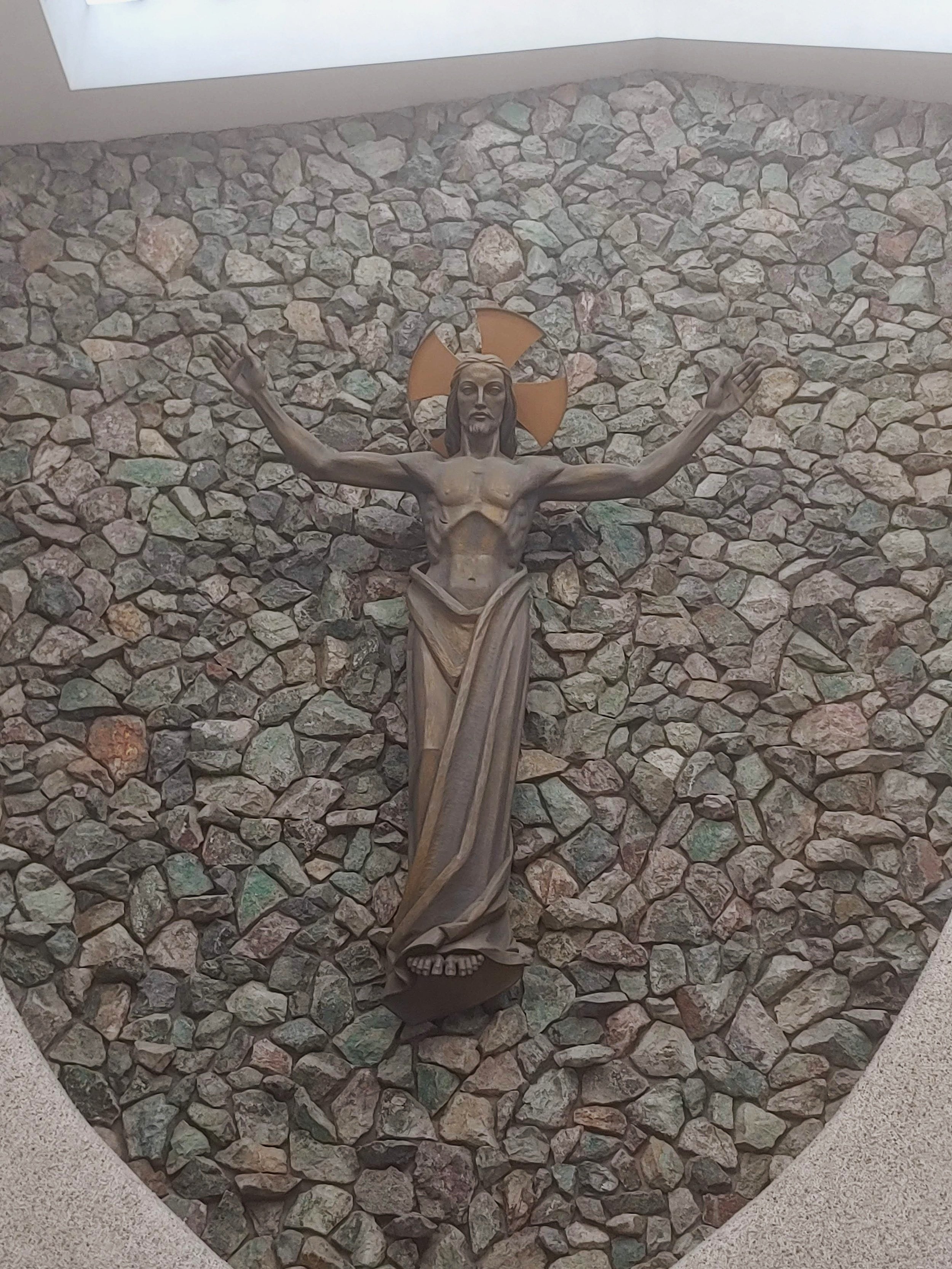
St. Veronica History
The parish of St. Veronica began in 1925 in the Tippecanoe section of the area then known as Town of Lake. The request was made by Archbishop Sebastian G. Messmer that twelve men be found in the area to organize a parish with Rev. Julius Wemuth. They, in turn, were asked to find others.
Land had been donated by the Archdiocese and by Hans and Veronica Jorgensen. The parish would be named St. Veronica in honor of the patron saint of one of the donors. Dances, bazaars, weekly card parties, and picnics were held to raise funds and to strengthen the sense of community developing within the forty families who would make up the new parish.
On September 8, 1926, the cornerstone was laid for a combination church and school. A separate convent and parish hall were planned for the immediate future. Formal dedication of the new church was on December 11, 1926.
The parish grew and prospered. The school held 160 students; operating with four grades in two classrooms. Unfortunately this trend was shortly reversed by the reality of the Depression. Then it would be the struggle of all the dedicated parishioners and their willingness to receive help that would sustain growth.
No resident pastor had yet been assigned to this parish. Father Wermuth, who had started the work of organizing the parish, was co-pastor at St. Gerard's and left to become their permanent pastor; a position he held until his death in 1954. Father John Dark became St. Veronica's pastor in 1928 but resided at PoiNono High School where he was at the same time president and teacher of history and religion. In 1929, Father Raymond Kelly became the first full-time resident pastor.
By 1931 the pressures to serve the needs of the growing parish community coupled with the consequences of the Depression, reduced St. Veronica to poverty. The parish struggled to survive. During this difficult time, Rev. Leo J. Schiffler accepted the call to revitalize the parish. Loans from the Archdiocese and monetary assistance from a citywide benefit at the Milwaukee Auditorium kept the parish afloat. Through continuing sacrifices and dedication all loans were ultimately repaid to the Archdiocese. St. Veronica Parish continued to grow. Barracks from Pulaski High School and some that once house prisoners of war detained at Mitchell Field, were acquired and used as classrooms. By the 1940's (during the pastorate of Rev. David Ryan) there were almost 1,000 families registered within the parish. A building fund was established for a school.
On December 6, 1950, Rev. Gordon A. Johnson became pastor. His first undertaking was the building of the new 17-room school. which was opened in 1952. Also at that time, a renovation of the church was undertaken and a parish hall and kitchen were included in the new building. Because classes had to continue during the construction, the row of barracks lining Norwich Street was moved back into the playground area. When construction of the school was completed, the old barracks were demolished and a playground and parking lot were created.
In the 1990's (during the pastorate of Rev. Joseph Frederick,) St. Veronica continued to be one of the largest parishes within the area, with 1,610 families and over 400 children in the school. Again, parishioners began a building fund, and in 1996, the Parish Center was complete.
From its very inception, the growth of St. Veronica Parish and Community has been based on the strong faith, support, and perserverance of many. St. Veronica Parish continues to be strong, vibrant, and welcoming community. With pride, the parishioners carry on the tradition.
October, 10 1965 Fr. Gordon laying the cornerstone
The church at night, 1966
1926 - The Original church building with its two classrooms
The 1940s barracks from Pulaski High School where school was conducted during construction
The 1965 steel frame and girders while under construction
Fr. Leo Schiffler became the pastor of St. Veronica in 1931. He is pictured here in the doorway of the former rectory at 3980 S. Whitnall.
March 17, 1965 a violent wind storm blew down the girders






